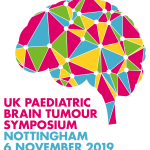 The National Cancer Patient Experience Survey (NCPES) 2018 is the eighth iteration of the survey, and is an important part of the national NHS Cancer Programme. This places patient experience on a par with clinical effectiveness and safety as a key strategic priority.
The National Cancer Patient Experience Survey (NCPES) 2018 is the eighth iteration of the survey, and is an important part of the national NHS Cancer Programme. This places patient experience on a par with clinical effectiveness and safety as a key strategic priority.
Results from the annual survey have just been published. The survey is designed to:
- Give the cancer community an opportunity to share its opinion about its experience
- Monitor national progress on cancer care
- Provide information used to drive local quality improvements
- Assist multi-disciplinary teams (MDTs), commissioners and NHS Trusts in improving patient services
- Inform the work of charities supporting cancer patients
We’ve been tracking this every year for five years now, so have a good overview of the trends.
There is some good news, but brain cancer is still behind compared to other cancer sites. When you take a closer look at the data, whilst there has been slight improvement in the last 12 months, some stats are still not at the levels they were in 2014. This is not good enough.
When asked how you would rate your care, brain cancer scored lower than any other cancer site at 8.39. What lies behind this? We think it is a lack of understanding about what it really means to be living with a brain tumour and the daily challenges this brings. This is reinforced by our daily interactions with you:
“It would be good to see a more holistic approach. After my treatment has finished, I was left to my own devices. It would be helpful to have a road map for the patient for how to get back to as much normality – if there is such thing – as possible. Many things required are of a fairly practical nature: moving from independent to assisted living, travel support, dietary support, exercise planning and tracking, hairdressing.” Patient
We know that living with a brain tumour is challenging – on so many fronts. We know, too, that dealing with the challenges that come with diagnosis makes life distressing for everyone involved. Patients feel remorse and guilt. Caregivers and loved ones feel isolated and lost. Challenges include:
- Threat to way of life
- Neurocognitive decline
- Lack of control with behaviour
- Impact on relationships
- Systemic problems leading to isolation
- Access to support.
What progress has been made – and what has fallen short
Care plans:
Whilst care plans have improved by 1%, the number of you being given a care plan is incredibly low at 26.5%, still lower than 27% in 2014.
Care plans feature in the NICE Guidelines, so make sure you ask for one – you are entitled to!
Opportunity to discuss worries and fears:
As both an inpatient and outpatient the score was low on this, 33% and 53% respectively. We are working hard through the shared decision making programme to change how fearful you are in hospital.
Living with uncertainty, dealing with fatigue or changes to behaviour and personality are not things that can be solved with a prescription. This is where we place our focus, so that together we can help you to have your best possible day, whether you are a patient or a caregiver, and no matter where you are on this trajectory.
Working together:
This has dropped by 9%, reversing an upward trend and putting us back to where we were in 2016. It’s a big drop, and it’s hard to say what lies behind this. Our guess is that it reflects an increasingly fragmented health service when the onus is increasingly on the patient and caregiver to manage their pathway. This is where our patient guides step up to the mark.
GP services:
It is unsurprising that 40.2% of you felt that GP services didn’t support you well during treatment in 2018. We know that GPs are overstretched – there is no silver bullet for this. GPs are the patient’s primary carer. They should be supporting you better. The more specific you can be with what you are struggling with, the better this will be.
Early diagnosis:
In 2017, 15% of you visited your GP over three times before you were told you needed to go to hospital about the health problem caused by your tumour. This is now back at 21%, the same level it was in 2015. Looked at another way, this means the vast majority of you are being diagnosed efficiently, visiting your GP twice or less.
Being diagnosed via A and E is not always a negative; it means you get into the system quickly. We know earlier diagnosis is an issue for some people and that the way they are diagnosed can make a significant difference to their quality of life. We are working on this with a group of clinical researchers and with the National Cancer Research and Analysis Service.
What can be done?
The more focused you can be in the asks you make of your clinical team, and in your feedback to us about the good and the bad, the better. It is only through collaboration that change and progress can be made.
Our first next step: to share a Know How on financial support. Only 57% of you were told you were entitled too free prescriptions and were signposted to financial help. We’ll announce the publication of this resource very soon – so stay tuned. You can find our other Know Hows here.
We will continue to focus on improving the transition point to community care after acute treatment and keep working hard to ensure everyone who is diagnosed with a brain tumour knows about the range and quality of our support. Our biggest advice is to remember to think about “what matters to you”, even if the question you’re being asked is “what’s the matter with you?”. What do you need to have your best possible day?
Talk with a brainstrust coach – we can help you articulate it.










